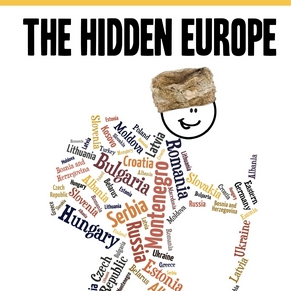
In 2008 hotel occupancy was near zero, on account of the garbage problems and the supposed problem with mozzarella cheese, which we didn’t even hear about until we got home. We could not have had a warmer welcome than we got in Naples. But, to be honest, the city reminded me a little of the lower east side of Manhattan in Godfather II; I kept looking up expecting to see Robert DiNiro on a rooftop or fire escape. And so many cars and so little traffic control! A good thing we had already been in southern Italy for ten days or we might have been afraid to leave the hotel.
But I would not have had any concern at all had I read Barbara Zaragoza’s new book, The Espresso Break. This is an amazing piece of work. It wears the label of a Travel book, but it is so much more – there is Italian history, Roman history, Greek history, archeology, art history, Italian culture, WWII history, several very interesting looking recipes, restaurant recommendations, hotel recommendations, and a fairly cogent explanation of current Italian politics. And, oh, yes, an incredible amount of information about Naples and surrounding areas.
Barbara lived in Naples for three years, 2008-2010, and she must have been taking notes just about the whole time. This book is an accumulation of information she posted on her blog, The Espresso Break while she was living there. It can be used for longer-term visitors, expats or military based in Naples, as a guide to weekend tours of various aspects of Naples. She has seven distinct tours outlined, focusing on a topic or an area, and several additional holiday-oriented tours (even Halloween is starting to catch on in Naples). Additionally, she has many ‘nooks’ or basically points of interest that you can check into in a shorter period of time.
Barbara also seems to have found every English-language book about this area and peppers her descriptions with suggestions as to where to go to get more information on specific topics, which include some bilingual Italian websites.
I definitely learned some things from this book. I did not realize that many of the ruins we see in Pompeii are actually modern reconstructions of what archeologists think the ruins should look like. I did not know that Marie Antoinette’s sister became queen of Naples, nor did I know that St. Thomas Aquinas lived in Naples, nor, for that matter, that Virgil lived there, and some passages from the Aeneid can still be used as a guide to parts of the area.
So I would recommend this book for anyone planning to go to Naples, especially if for more than a day or two. It is also enjoyable for someone who is interested in Italian history and the culture of the area. Also for someone who has already visited Naples and hopes to go back again some day.
If someone is visiting Naples for a day or two – I would hope your guide knows as much as Barbara. I hope Rick Steves reads it!
- Search for Great Tours HERE
- Get an eSim to be able to use your smartphone abroad.
- Get a Car Rental
- Buy Travel Insurance
- Get a universal plug adapter
- Book Your Accommodation HERE

 Book Review – The Venice Experiment by Barry Frangipane with Ben Robbins
Book Review – The Venice Experiment by Barry Frangipane with Ben Robbins Book Review – Dining Out in Paris by Tom Reeves
Book Review – Dining Out in Paris by Tom Reeves Book Review: “A Weak American in Russia and Ukraine” by Walter Parchomenko
Book Review: “A Weak American in Russia and Ukraine” by Walter Parchomenko Book Review: The Hidden Europe by Francis Tapon
Book Review: The Hidden Europe by Francis Tapon

Jeremy Branham
Says:April 30th, 2012 at 12:07 pm
I love books that aren’t just about travel, places to see, and things to do. I want a history lesson. I want the place to come alive. I guess that is why I still like some guide books. I like blogs that tell a story. I want a place to be more than a checklist.
While I’ve been to Italy, I’ve never been to Naples. However, books like this give me a greater appreciation for a place, even if I’ve never been.